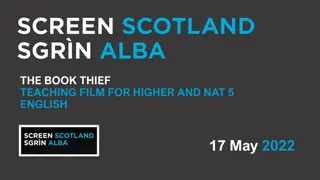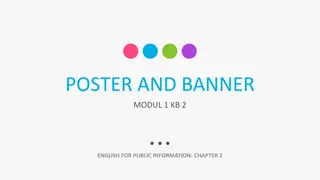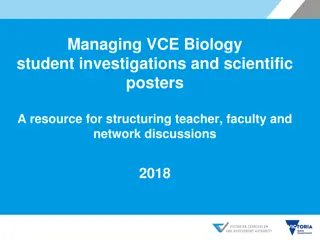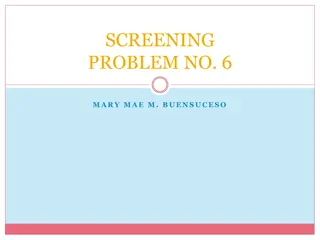Virtual Innovation Projects at University of Edinburgh
The Virtual University of Edinburgh hosts innovative projects like I-Room for intelligent interactions, Project AIBO for human-robot cooperation, and I-X for intelligent planning and design. These projects showcase cutting-edge technology and research efforts in virtual environments. The O-Plan architecture has been applied in various domains such as space construction, logistics, and crisis planning, demonstrating the university's commitment to advancing technological solutions.
Uploaded on Dec 16, 2024 | 0 Views
Download Presentation

Please find below an Image/Link to download the presentation.
The content on the website is provided AS IS for your information and personal use only. It may not be sold, licensed, or shared on other websites without obtaining consent from the author. Download presentation by click this link. If you encounter any issues during the download, it is possible that the publisher has removed the file from their server.
E N D
Presentation Transcript
Vue Virtual University of Edinburgh The Vue group is a virtual educational and research institute bringing together all those interested in the use of virtual worlds for teaching, research and outreach related to the University of Edinburgh. http://vue.ed.ac.uk Contact: Prof. Austin Tate <a.tate@ed.ac.uk>
I-Room: a Virtual Space for Intelligent Interaction The I-Room virtual environment is a shared persistent space, founded on process methodologies and offering intelligent systems support for interaction and collaboration between users, systems and agents. "I" stands variously for intelligent, information, interactive, integrated and instrumented - http://openvce.net/iroom
Project AIBO A project which explored artificial intelligence technology to support team work between human and robotic systems working in a cooperative and safety conscious way in the home or the workplace. The technology used included multi- agent systems, teamwork, semantic web use, human and robot agent presence and status notification, intelligent planning, coordination, task execution and monitoring, and task- achieving behaviours. The project provided a source of projects in Artificial Intelligence, and Robotics and exhibits for open days and school visits. http://www.aiai.ed.ac.uk/project/aibo/
I-X Intelligent Technology for Planning and Design An open architecture for the creation of intelligent systems for synthesis tasks (such as planning, design and configuration) based on the handling of "issues" and the management or maintenance of the constraints describing the product of the process. 1. Representation - a core notion of a synthesis process and the product(s) of such processes as a set of nodes making up the process or product, along with constraints on the relationship between those nodes, a set of outstanding issues, and annotations related to these - <I-N-C-A> - Issues, Nodes, Constraints and Annotations. 2. Reasoning - the provision of reusable reasoning and constraint or model management capabilities. 3. User Interfaces - to understand user roles in performing collaborative activities and to provide generic modules which present the state of the processes they are engaged in, their relationships to others and the status of the artefacts/products they are working with. 4. Applications - work in various application sectors which will seek to create generic approaches (I-Tools) for the various types of Task in which users may engage. http://www.aiai.ed.ac.uk/project/ix/
O-Plan Open Planning Architecture O-Plan has already been applied in areas such as: Space Platform Construction Satellite Planning and Control Construction and House Building Unix administrator's scripting Web Services Composition Logistics Non-Combatant Evacuation Operations Crisis Response Planning Air Campaign Planning Workflow Unmanned Autonomous Vehicles Biological Pathway Discovery The O-Plan Project (1984 to 1999) explored issues of coordinated command, planning and control. It had the objective of developing an architecture within which different agents with command (task assignment), planning and execution monitoring roles could work together in a mixed-initiative fashion. It used an extendable and intelligible representation for plans - <I-N-OVA>. Each agent has a structure which separates the following components: the representation of the processing capabilities of an agent; the computational facilities available to perform these capabilities; the constraint managers and commonly used support routines which are useful in the construction of command, planning and control systems; the decision making about what the agent should do next; the handling of communications between one agent and others. The main contribution of the O-Plan research was to provide a complete vision of a more modular and flexible planning and control system incorporating AI methods. http://www.aiai.ed.ac.uk/project/oplan/
Co-OPR: Collaborative Operations for Personnel Recovery Design and Evaluation of Collaborative Sensemaking and Planning Tools for Personnel Recovery Combined Technologies: AIAI - I-X - Intelligent Technology Open University - Compendium IHMC - KAoS - Policy Mgmt. Services DARPA - CoABS Grid CoAKTinG - Collaborative Advanced Knowledge Technology in the Grid CoAX - Coalition Agents eXperiment http://www.aiai.ed.ac.uk/project/co-opr/
Planning for Oil Rig Blow Out Prevention 3D mesh model oil rig and sea-bed blow out preventer modelled by Robert Gordon University Oil and Gas Centre and used on Vue in OpenSim.























